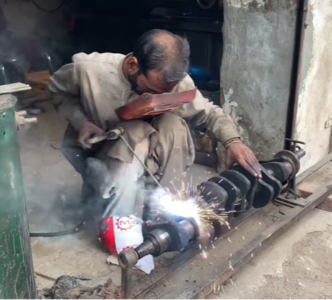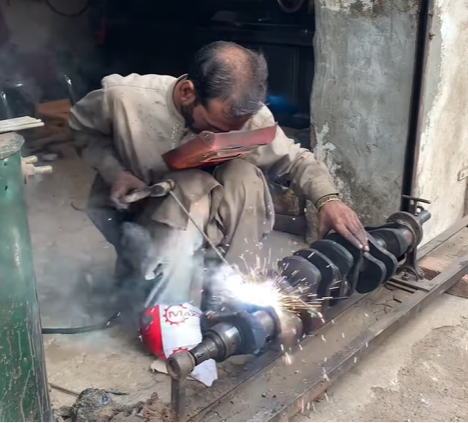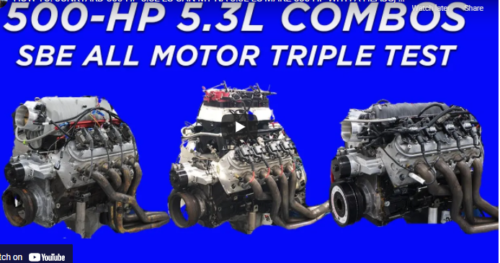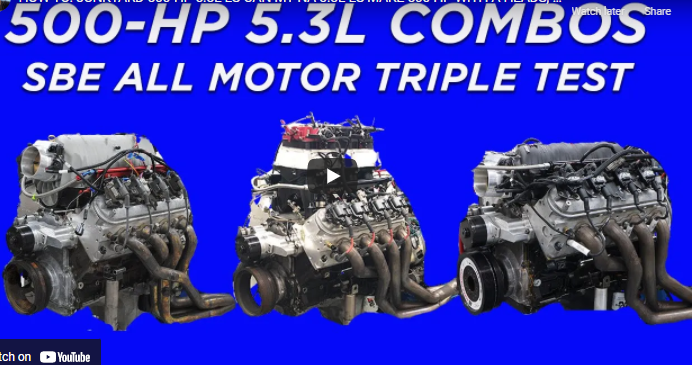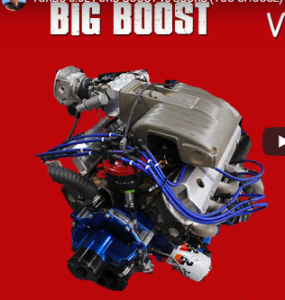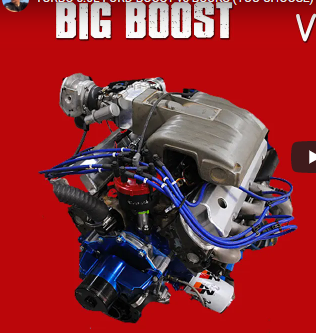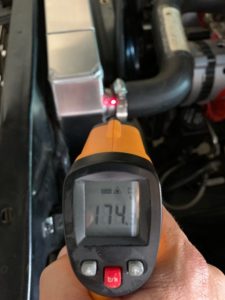
(Words and Photos by Todd Ryden) It’s summertime, it’s a hot one and there’s a severe shortage of events, however that doesn’t mean that you can’t hit the road and cruise! When it comes to driving in this extreme summer heat, one thing you have got to make sure is dialed in on your hot rod is the cooling system. Sitting at a light watching the temp gauge rise like your tach saps the fun right out of a nice cruise. When it came to cooling, our ’64 Chevelle had some issues. With a very timid 350 and factory A/C, the car has just never run as cool as we thought it should. It was equipped with a 4-row radiator and a pair of 20 year old electric fans, but rolling down the road on a warm day would still present +200-degree temps, and turning the A/C on would put it over the top – so what good is having A/C if you can’t use it in the heat? It was time for a solution, so we dialed up www.flex-a-lite.com to check out their direct fit radiators.
Flex-A-Lite has been designing and refining cooling solutions for nearly 60 years and with a couple key taps we found exactly what we needed; a direct bolt-in aluminum radiator built with their exclusive Extruded Tube Core Performance technology. Icing on the cake was that the radiator was also available with a fully shrouded 15” Black Magic Xtreme S-Blade electric fan with an adjustable thermostatic controller. And, it comes pre-mounted from the factory – sold!
So what exactly is the Extruded Tube Core technology built into the radiator? Traditional radiators have 2, 3 or 4 rows of oval tubes that the coolant flows through (hence the name 4-row or 4-core radiator). Rather than having these oval tubes surrounded by cooling fins, Flex-A-Lite uses an extruded core with several coolant passages across the entire thickness of the radiator core. This creates more contact between the coolant and the extruded tube which improves cooling.
The flat area of these extrusions provides an ideal surface to braze the cooling fins to maximize the contact between the tubes and fins for improved heat rejection. The cores are brazed together in a proprietary oven system and machine welded so there is no epoxy used at asdll. On top of that, the cooling fins themselves are treated to tiny louvers punched into them to direct airflow more efficiently. Cool stuff (sorry, couldn’t resist.)
When Flex-A-Lite said direct-fit, they meant an exact fit. We did have to change the upper hose due to the previous aftermarket unit having a different style outlet but who knows where that came from. The new S-Blade fan covers the entire core and is much more powerful than the small duals we had. Since we already had fan relays in place, we simply spliced the original fan connector to the new one.
The Flex-A-Lite radiator and electric fan combo made a noticeable difference to the temp of our Chevelle, both while on the road and when sitting in traffic (thanks in part to the efficient Black Magic Extreme fan. At steady cruising we’re running consistently 10-15-degrees lower temps and while stopped at lights, the fan actually lowers the temp to where the fan cycles off – the old setup couldn’t do that.
Flex-A-Lite offers a long list of direct fit radiators as well as versions for specific LS swaps. The LS swap models have the inlet and outlet on the passenger side, plus they include a threaded port in the side tank to connect to the LS engine steam tubes. Check out the Extruded Tube Core radiators as well as their transmission and engine oil coolers. Make yourself, and your engine, happy on those hot summer cruises.
SIDEBAR
BEFORE/AFTER
We wanted to try to be able to show the improvements between our old cooling system and the new Flex-A-Lite unit so before tearing into the Chevelle, we took it for a six mile loop through town and a couple miles on the highway. Then, we let it sit and idle at the shop for 10 minutes while we checked the temps near the upper inlet and lower outlet with a temp gun. We also had a dash gauge and a temp value from the EFI system.
After the drive we measured only a couple degrees between the inlet and outlet temps of the radiator. No wonder the engine wasn’t cooling. Plus, the fans were never able to pull the temp down enough to cycle off.
With the Flex-A-Lite radiator and fan installed, we hit the road for our same six mile trek through town followed by a 10-minute idle soak. The gauges both showed a 10-15 degree drop while just cruising without the fan even running. We also recorded about a 20-degree difference between the inlet and outlet. Quite a drop compared to the old radiator!
The car definitely runs cooler and the single fan pulls the temp down to where the fan actually cycles off while we’re at a stop. In short, the Flex-a-Lite update definitely made us cooler and we can actually enjoy cruising again and using our A/C.
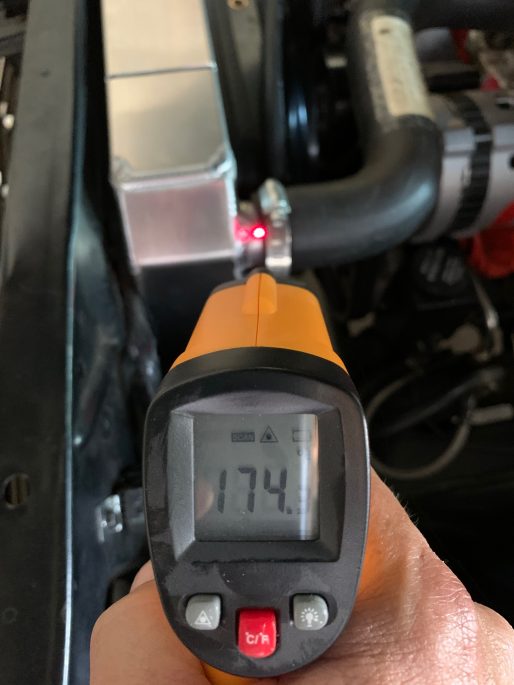
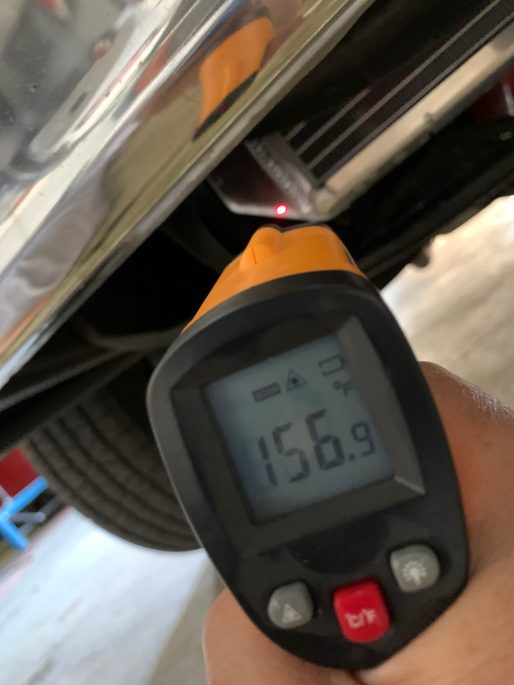
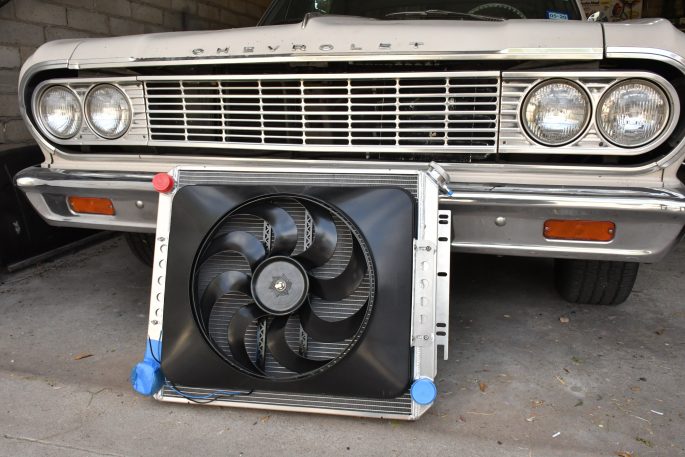
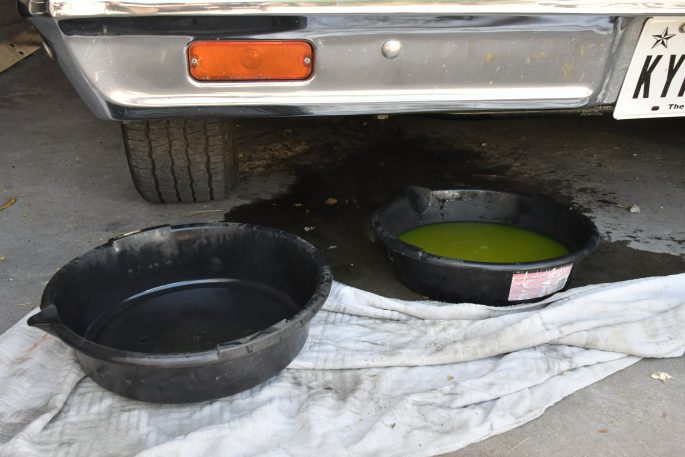
No matter how hard we try with drip pans, inevitably, there will be a mess. Coolant system or trans fluid…bring in the kitty litter.
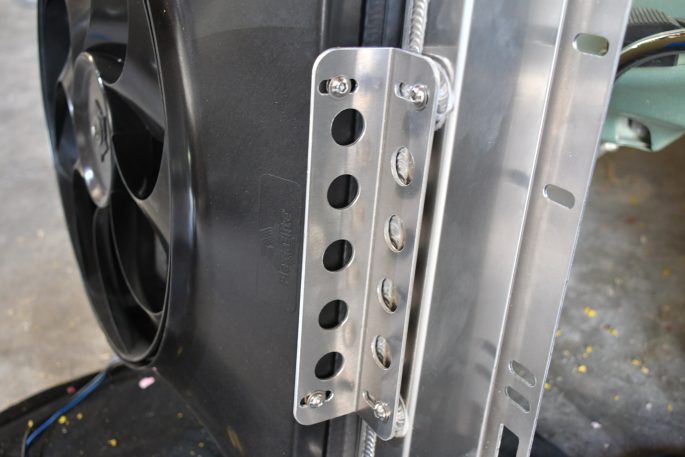
On the right is the mount that aligns with the factory radiator support for a bolt-in fit. Note the sturdy electric fan mount which also includes a rubber seal around the fan shroud to ensure the fan draws air in and across the fins.
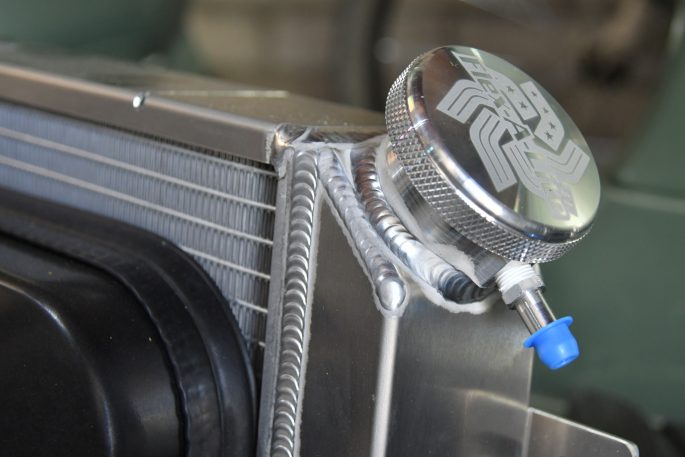
Flex-A-Lite includes a 22-24 pound cap is included to seal the coolant and control the pressure. Note the screw-in overflow nipple. No cheesy soldered one to break off one day.
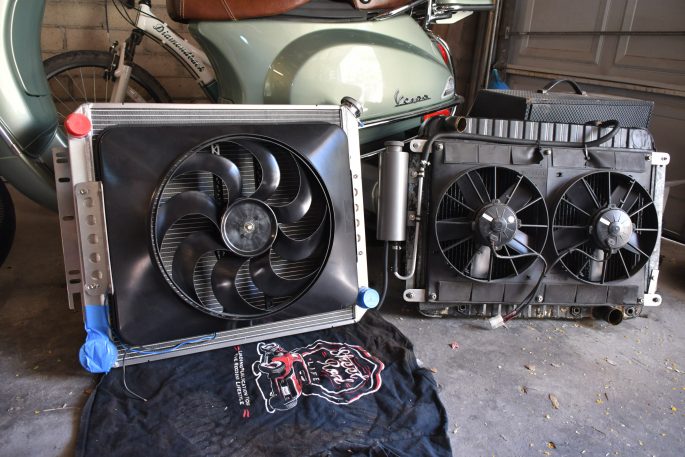
Sitting side by side, you can see how many more rows of fins the new unit has by replacing the upper and lower tank. Also, the single fan covers as much, and more, room than the old duals.
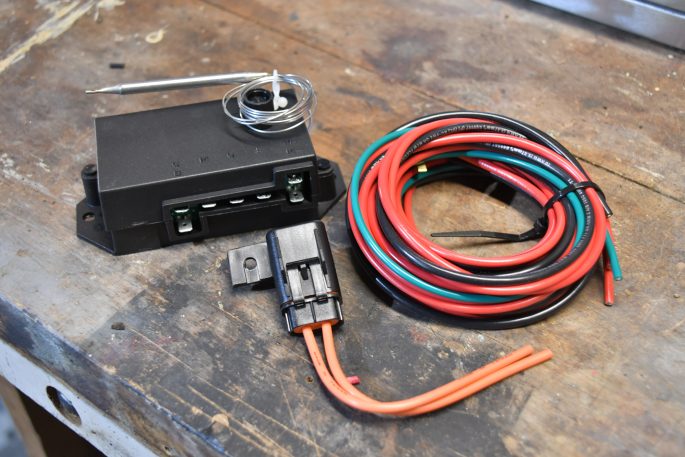
Flex-a-Lite offers a controller for the electric with an adjustable activation point. We didn’t install the controller (yet) because our EFI system handles the temperature activation. With plans for a new carb test in our future, the controller will be put to good use soon.
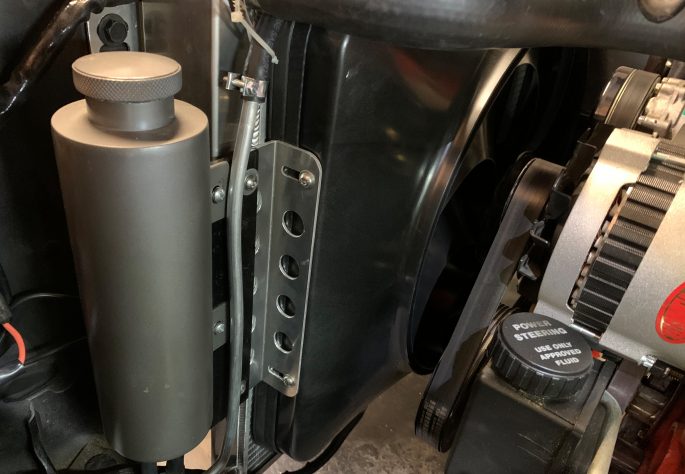
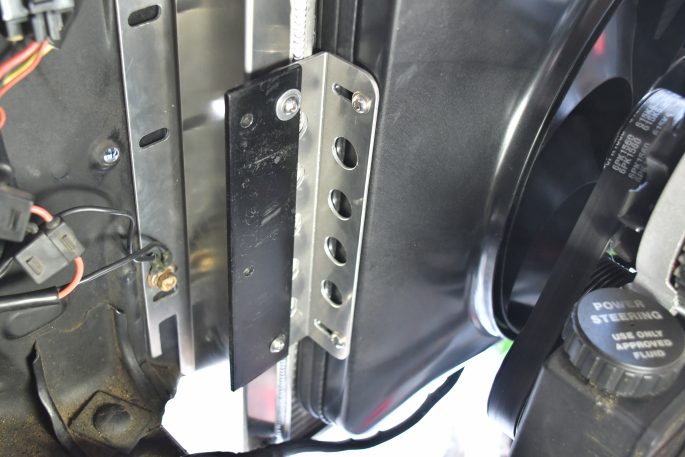
For our overflow tank, we simply made a simple aluminum bracket that bolted to the fan mount.
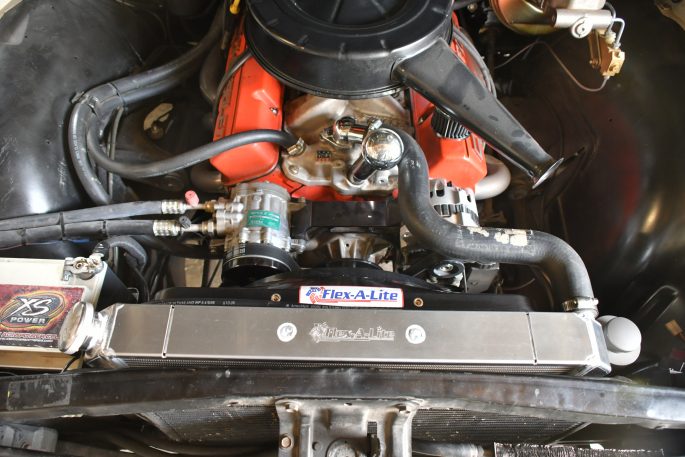
The install was about as bolt-in as possible and we saw immediate results in the cooling capabilities of the new Flex-A-Lite radiator and fan. We’re cool again! (We also noticed how much TLC our Chevelle needs under the hood in the detailing department.
Source:
Flex-A-Lite
www.flex-a-lite.com
Tech : 253-922-2700
